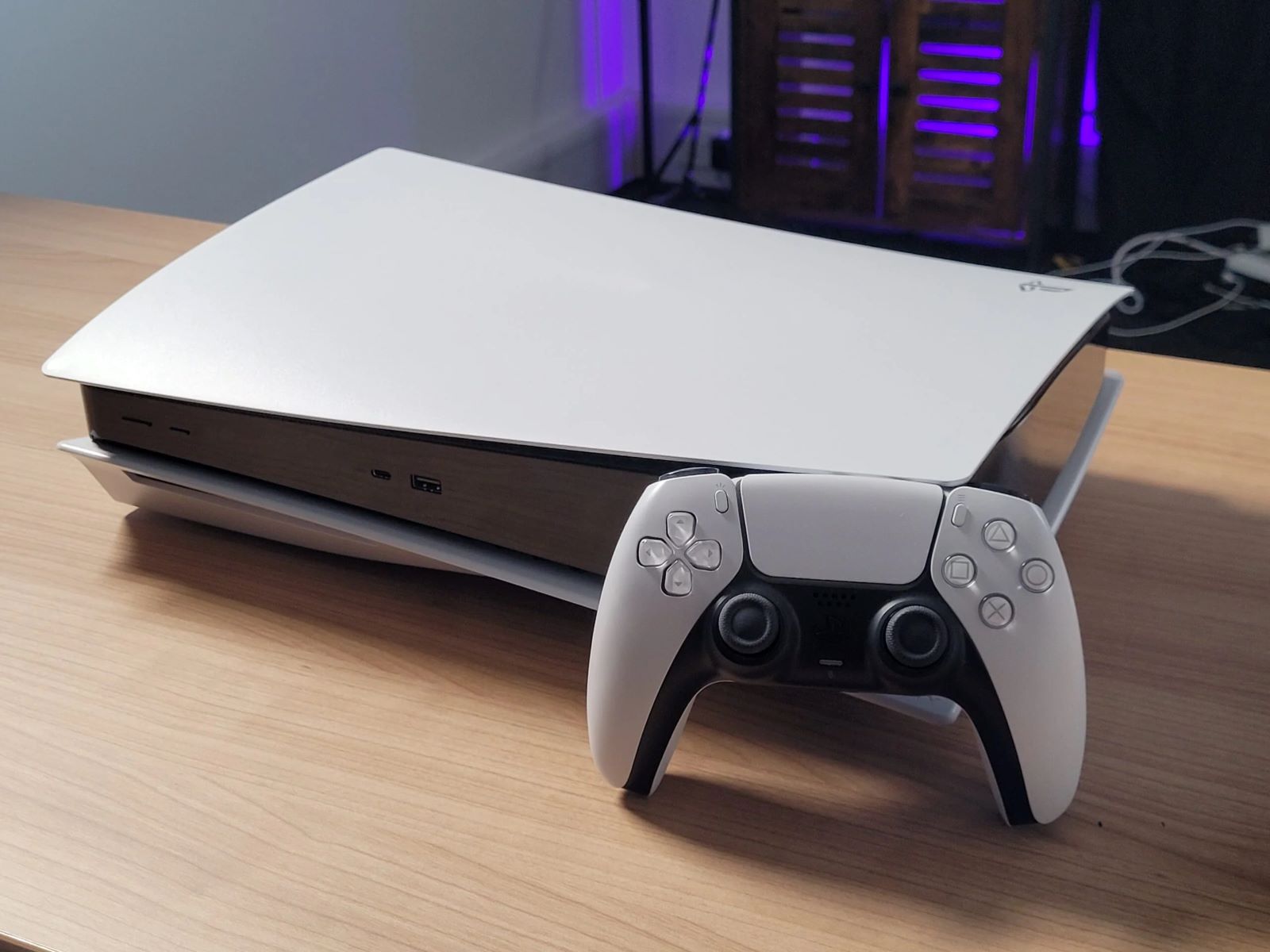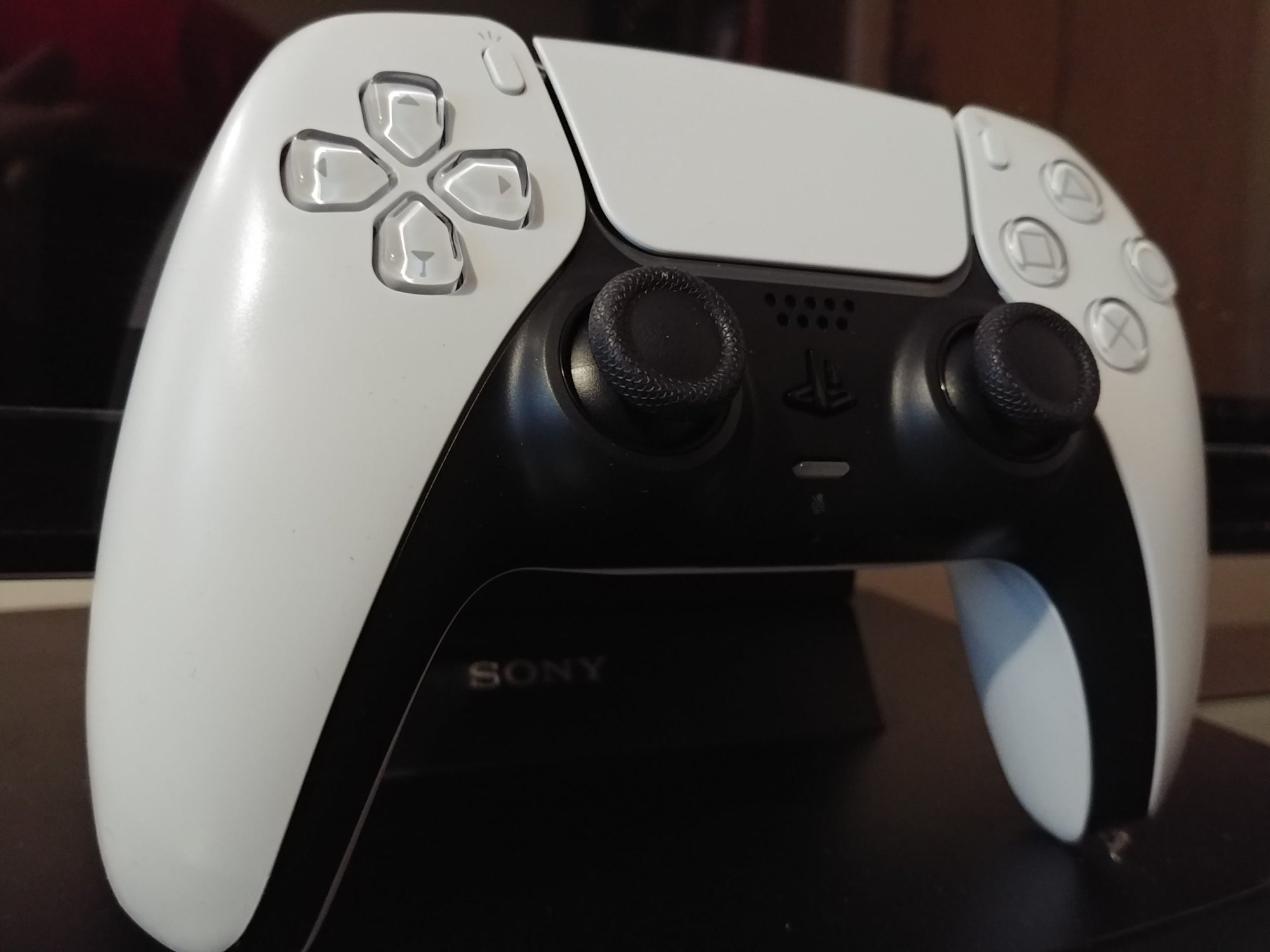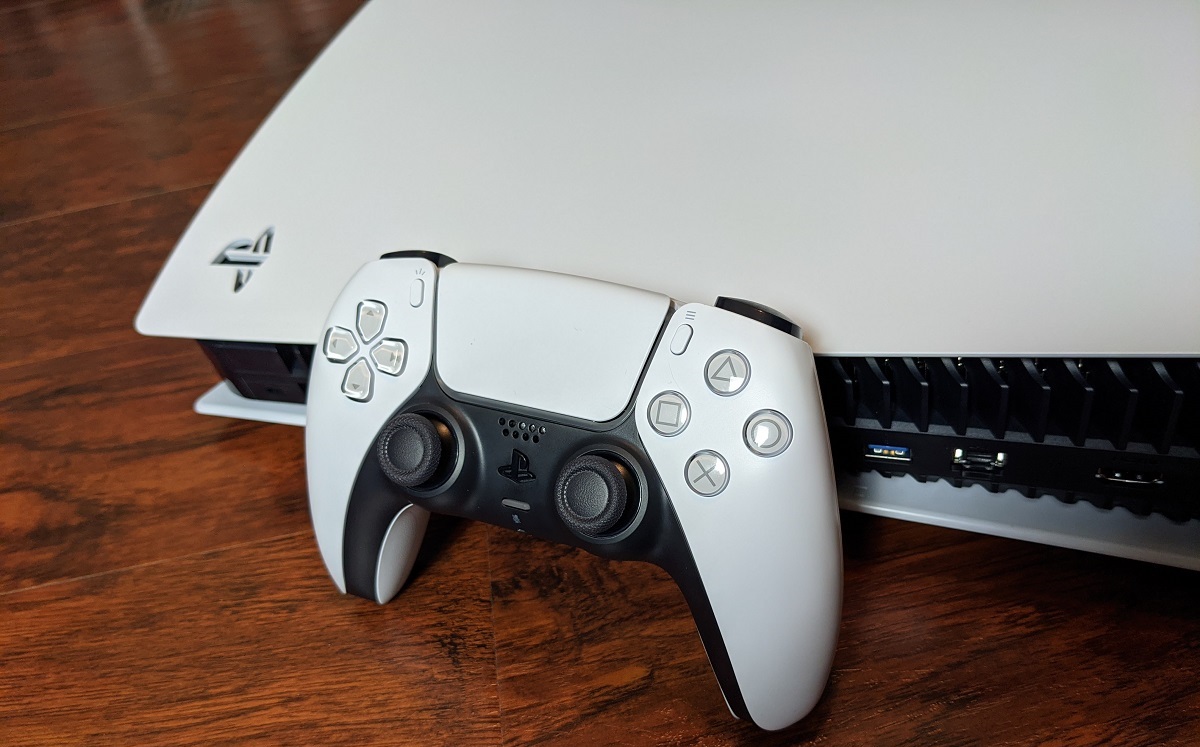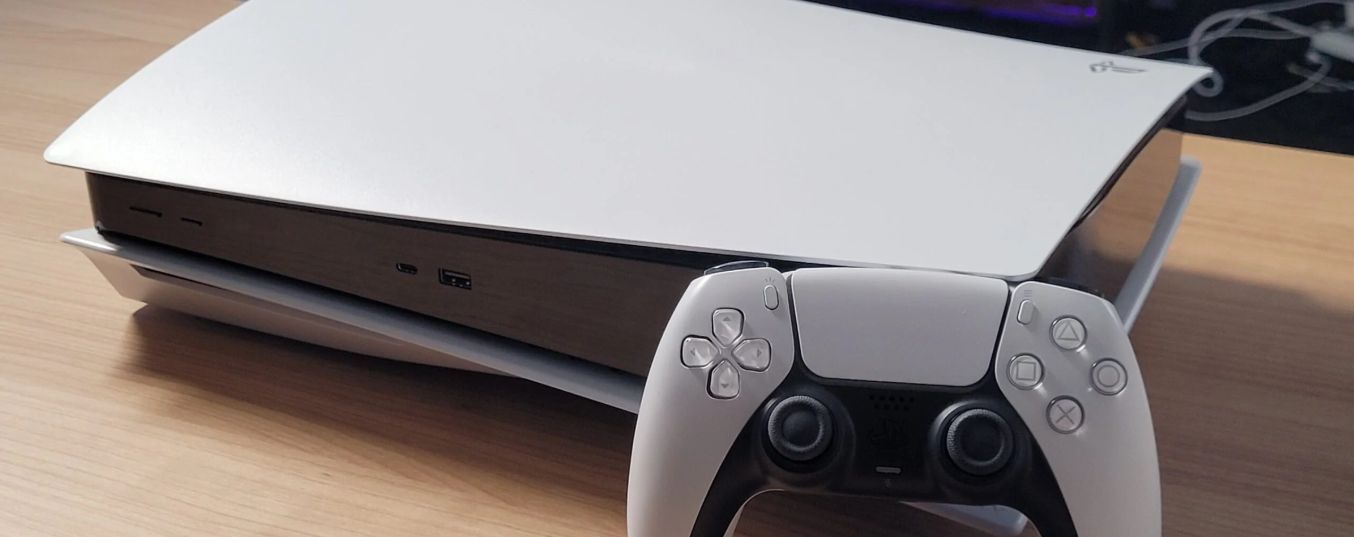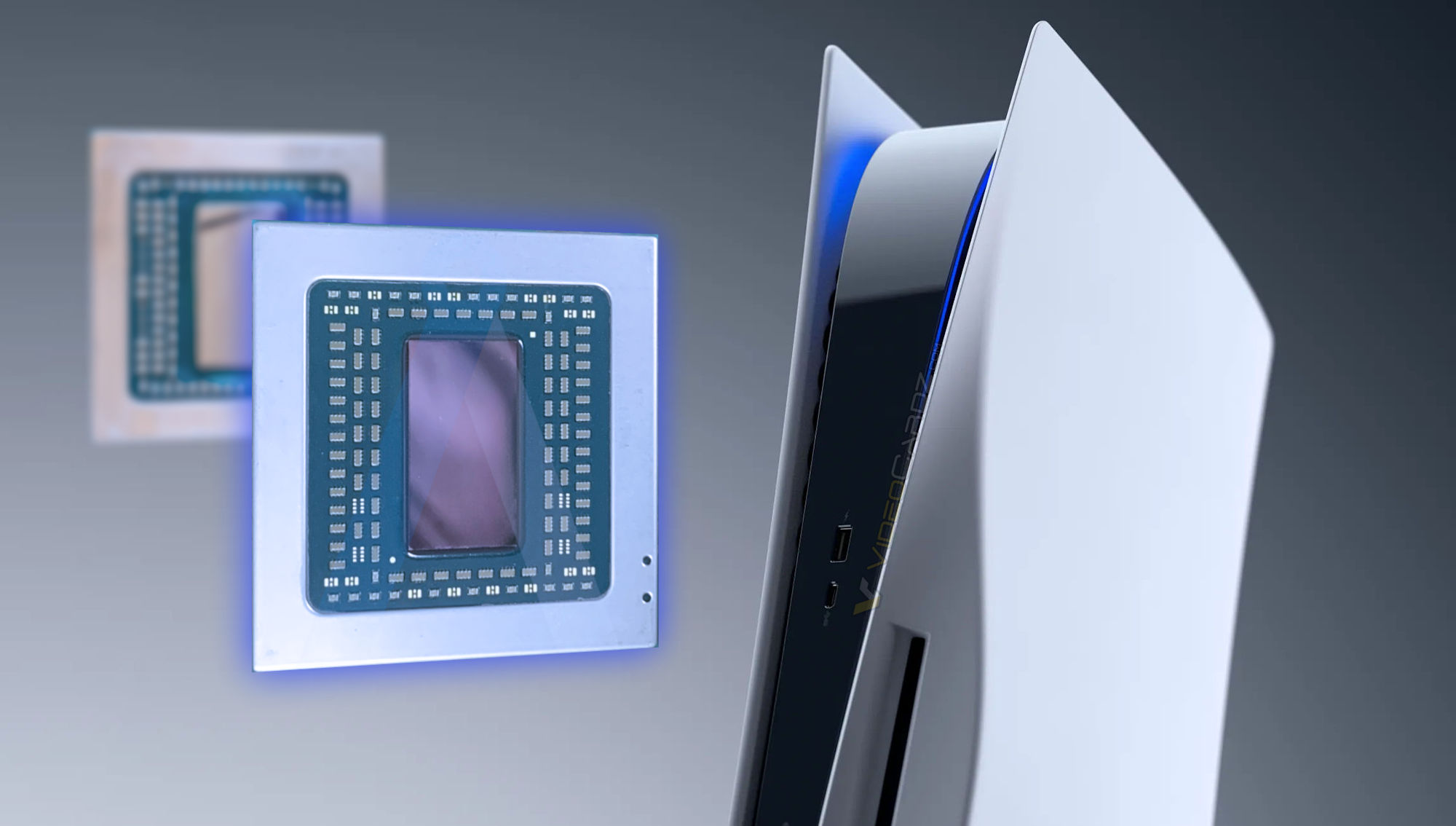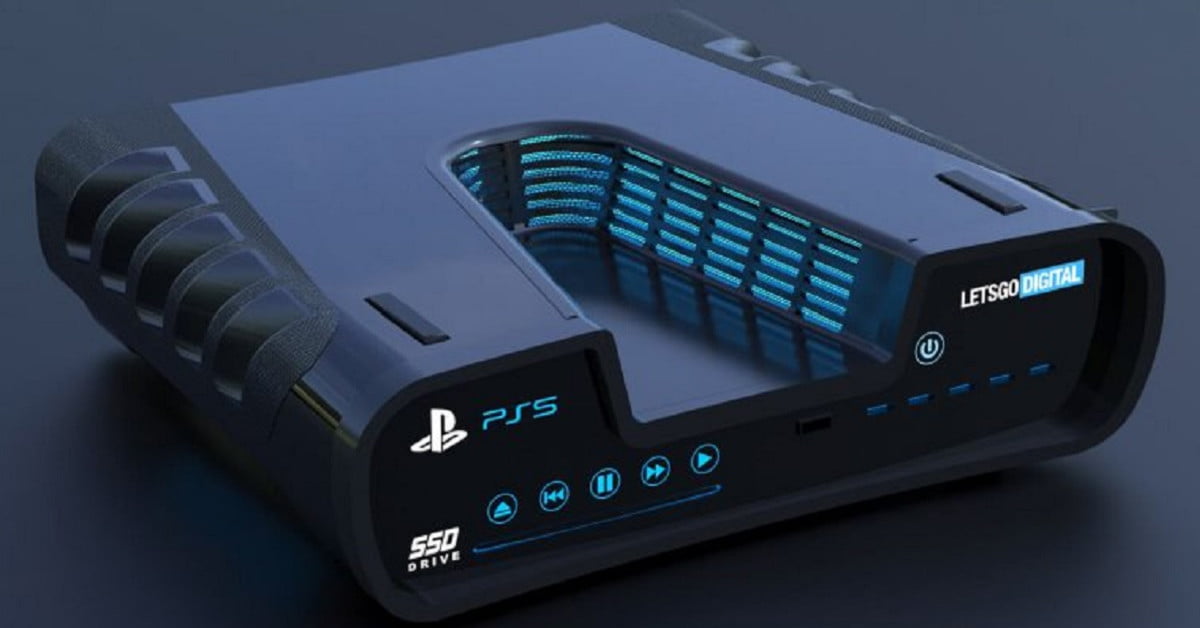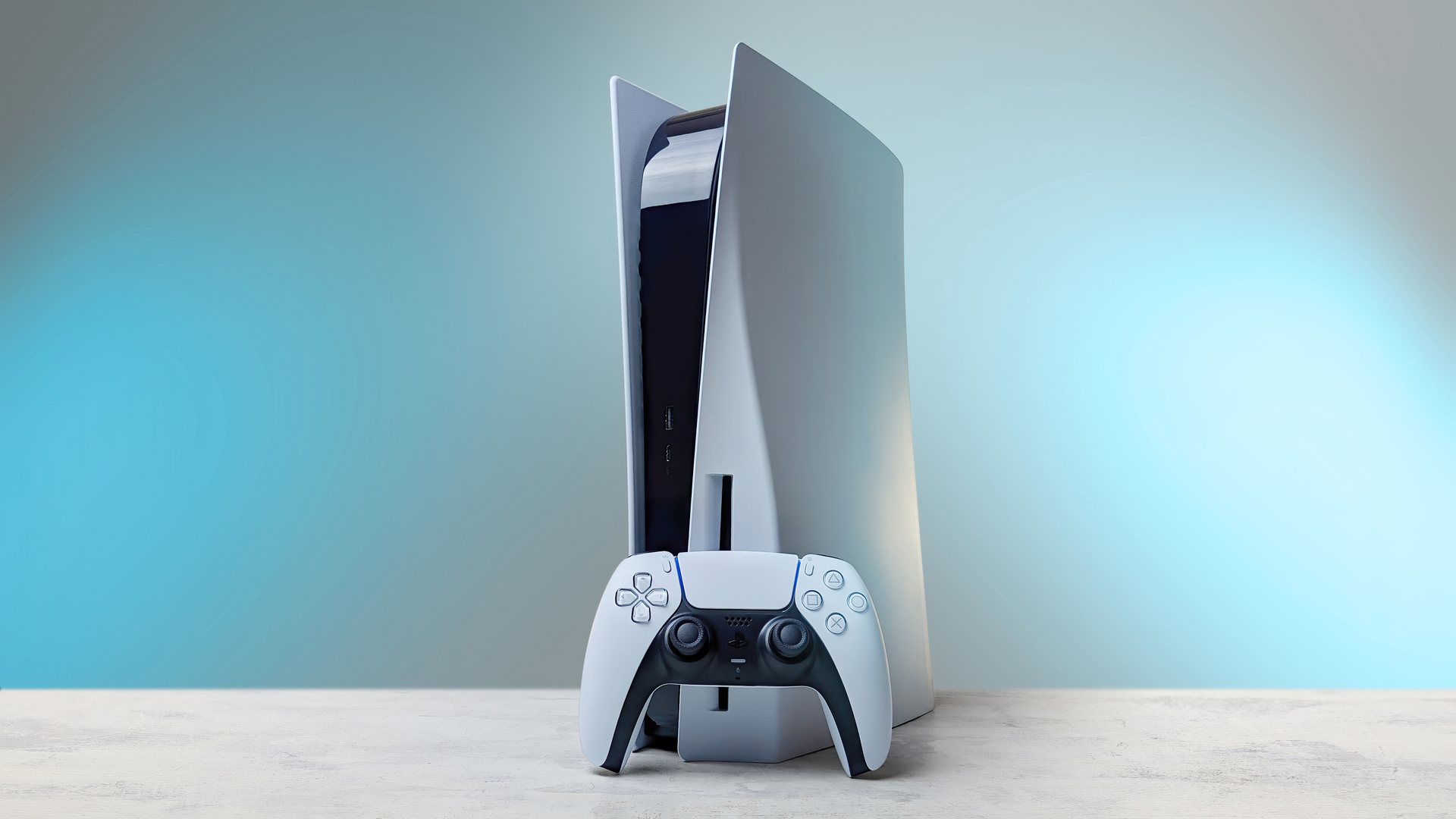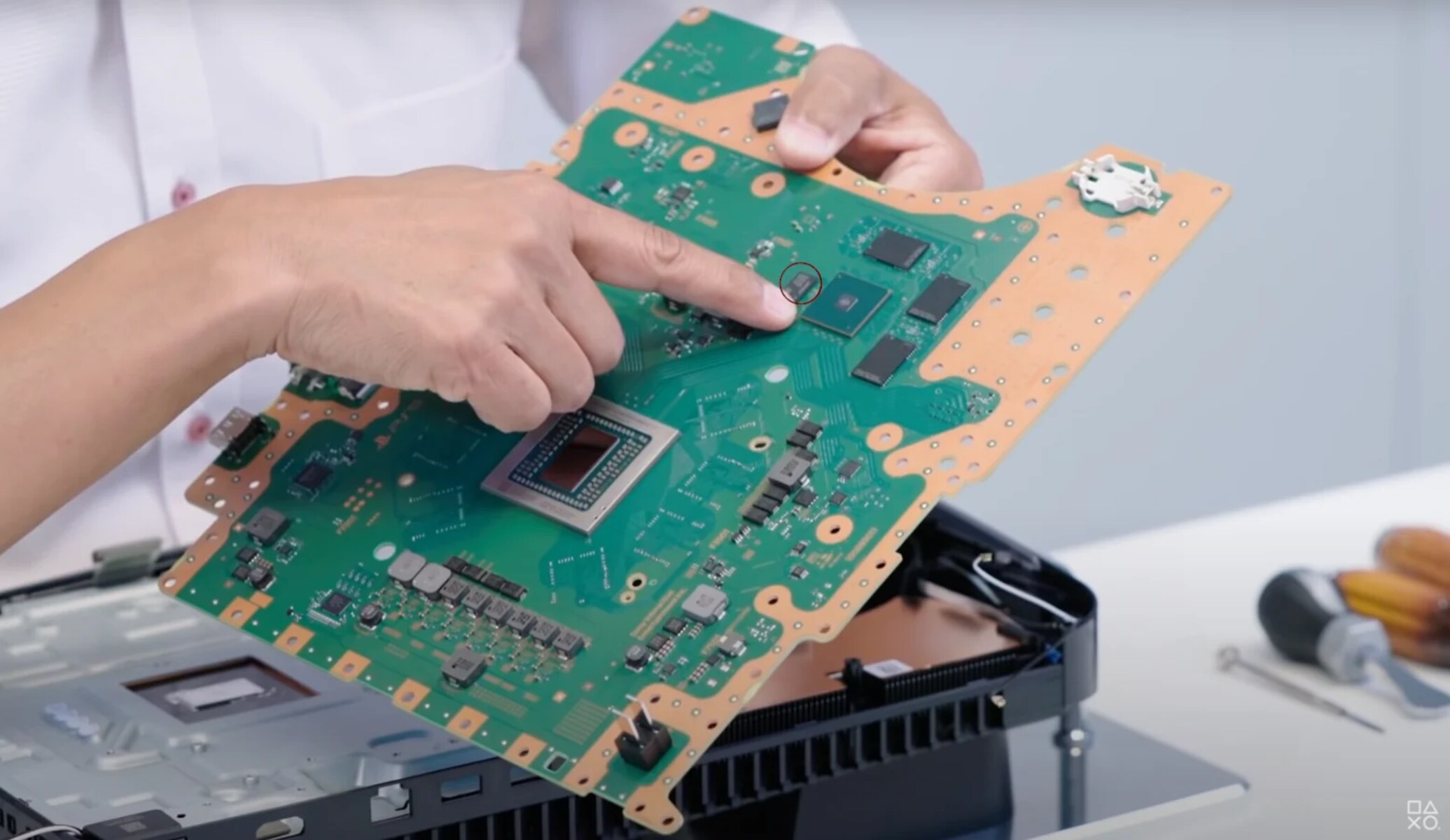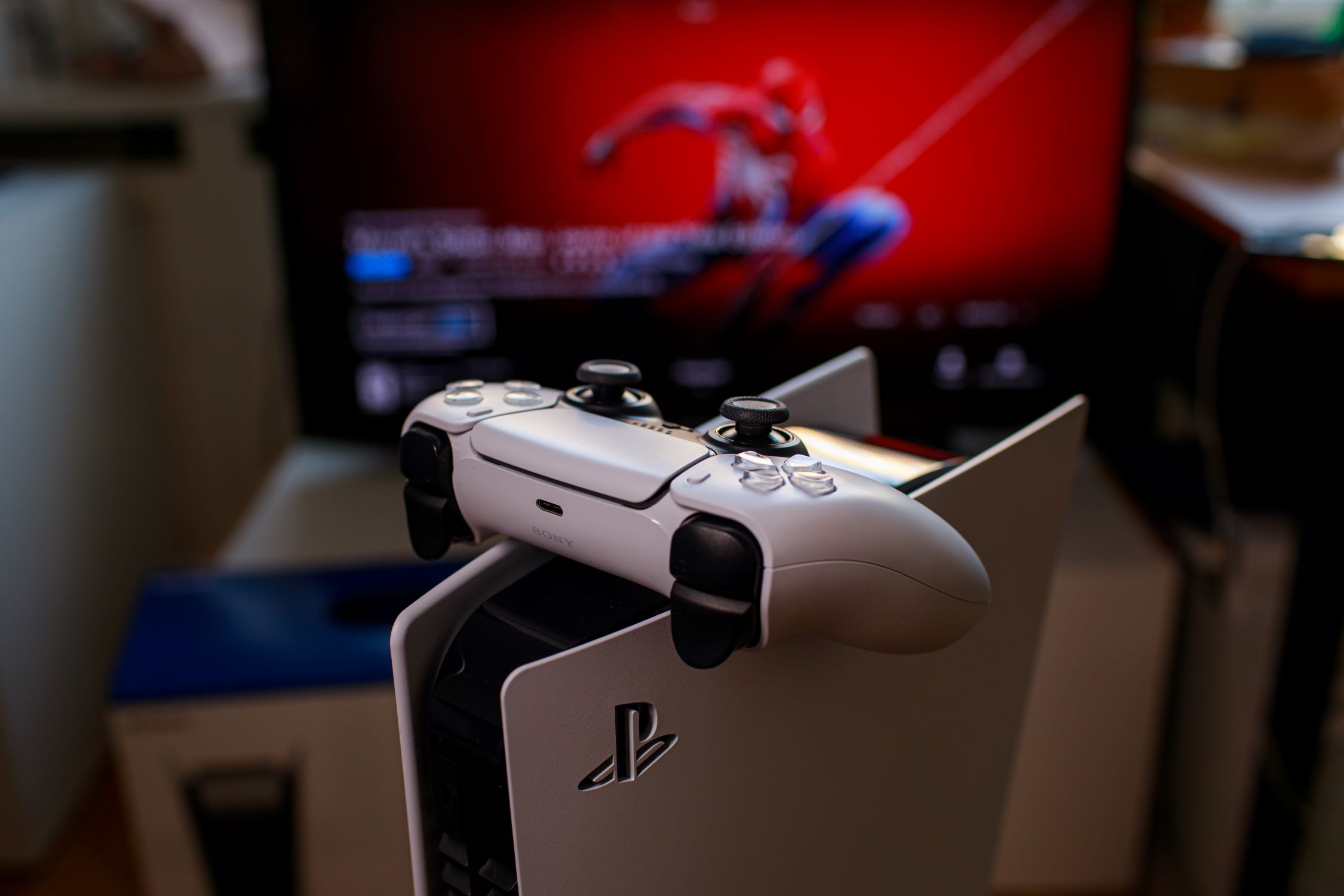Introduction
Gaming consoles have come a long way since their humble beginnings, with each new generation pushing the boundaries of technology and graphical capabilities. One of the key components that contribute to the stunning visuals and immersive gaming experiences of these consoles is the Graphics Processing Unit, or GPU. The GPU is responsible for rendering and processing the graphics in games, enabling smooth gameplay and lifelike visuals.
With the highly anticipated release of the PlayStation 5 (PS5), gamers around the world are eager to know what kind of GPU powers this next-generation console. Sony, known for its cutting-edge technology, has designed a custom GPU specifically tailored to maximize the gaming experience on the PS5.
In this article, we will explore the significance of GPUs in gaming consoles, the evolution of GPUs in PlayStation consoles, and delve into the details of the custom GPU that powers the PS5. We will also discuss the specifications of the GPU and its ray tracing capabilities, shedding light on how these features enhance the performance and graphics of the PS5.
So, if you are curious to know about the GPU that drives the graphics of the highly-anticipated PS5, read on to discover the exciting advancements that await gamers in the next generation of gaming consoles.
What is a GPU?
A Graphics Processing Unit, commonly known as a GPU, is a specialized electronic circuit that is designed to handle and accelerate the rendering and display of images, videos, and animations. Unlike a Central Processing Unit (CPU), which is responsible for executing general-purpose tasks, the GPU focuses on performing complex mathematical calculations related to graphics processing.
GPUs consist of thousands of smaller processing units, called cores, that work in parallel to process large amounts of data simultaneously. This parallelization enables GPUs to handle the intensive calculations required for rendering high-resolution images and running sophisticated visual effects in real-time.
Originally developed for computer graphics and gaming, GPUs have found applications in various fields such as scientific research, machine learning, and cryptocurrency mining. The immense computational power and parallel processing capabilities of GPUs make them ideal for tasks that require heavy data processing and number crunching.
In gaming consoles, the GPU plays a vital role in delivering stunning visuals and smooth gameplay. It processes and renders the graphics of the game, including textures, shading, lighting, and special effects. The GPU works in conjunction with other components of the console, such as the CPU and memory, to provide an immersive gaming experience.
As technology advances, GPUs continue to evolve, becoming more sophisticated and capable of handling increasingly complex graphics. The integration of advanced features, such as real-time ray tracing and AI-based upscaling, further enhances the visual fidelity and realism in games.
In the next section, we will explore the role of GPUs in gaming consoles and their evolution over the years, leading up to the custom GPU designed for the PlayStation 5.
GPU in Gaming Consoles
Gaming consoles rely on GPUs to provide the graphical prowess necessary for delivering immersive gaming experiences. These GPUs are specifically designed to meet the demands of gaming, focusing on delivering high-quality graphics, smooth frame rates, and advanced visual effects.
The GPU works in tandem with other components of the gaming console, such as the CPU and memory, to process and render the graphics of the game. It takes the data from the game software and converts it into images that are displayed on the screen in real-time.
One of the key advantages of using a dedicated GPU in gaming consoles is the ability to optimize performance and ensure consistent frame rates. By offloading the graphics processing tasks to the GPU, the CPU can focus on other game-related computations, resulting in smoother gameplay and reduced lag.
In addition, dedicated GPUs allow for better graphics fidelity and visual effects. They can support higher resolutions, such as 4K and even 8K, resulting in sharper and more detailed images. GPUs also enable the implementation of advanced rendering techniques, such as dynamic lighting, realistic shadows, and particle effects, which contribute to the overall visual quality of games.
Over the years, gaming consoles have witnessed significant advancements in GPU technology. Each new generation brings more powerful and efficient GPUs, enabling developers to create visually stunning games with improved performance. The evolution of GPUs in gaming consoles has been instrumental in pushing the boundaries of graphical fidelity and delivering more immersive gaming experiences to players.
In the next section, we will explore the journey of GPUs in PlayStation consoles, leading up to the custom GPU designed for the highly anticipated PlayStation 5.
Evolution of GPUs in Gaming Consoles
The evolution of GPUs in gaming consoles has been a remarkable journey, marked by significant advancements in technology and graphical capabilities. Each generation of consoles has seen a remarkable upgrade in the GPU, pushing the boundaries of what is possible in terms of visual fidelity and immersive gameplay.
The early gaming consoles, such as the Atari 2600 and the Nintendo Entertainment System (NES), utilized basic graphics chips that were capable of displaying simple 2D graphics on the screen. These early GPUs were limited in their capabilities, with minimal memory and processing power.
As gaming consoles became more popular and graphics expectations grew, the GPUs began to evolve. The Sega Genesis and Super Nintendo Entertainment System (SNES) introduced more advanced graphics chips that supported more colors, higher resolutions, and rudimentary 3D graphics.
With the release of the original PlayStation in 1995, Sony made a significant leap forward in GPU technology. The PlayStation introduced a dedicated 3D graphics processor, the Sony-designed GPU, capable of rendering more complex and realistic visuals compared to its predecessors.
The PlayStation 2, released in 2000, took the GPU capabilities to new heights. It introduced the Emotion Engine and Graphics Synthesizer chips, significantly improving graphics performance and enabling more sophisticated 3D graphics and effects.
The PlayStation 3, released in 2006, brought even more advanced GPU technology to the gaming console market. It featured the powerful RSX Reality Synthesizer, co-developed by Sony and NVIDIA, which supported high-definition graphics and improved physics simulations.
With the PlayStation 4, released in 2013, the GPU technology reached another milestone. The console featured an AMD APU (Accelerated Processing Unit), combining a CPU and GPU into one chip. This integration allowed for better performance and more efficient graphics processing, resulting in visually stunning games and seamless gameplay.
Now, with the upcoming release of the PlayStation 5, gamers can expect another leap in GPU technology. Sony has designed a custom GPU for the PS5 that promises to deliver unprecedented graphics performance, allowing developers to create even more immersive and visually impressive gaming experiences.
In the next section, we will dive into the details of the custom GPU that powers the PlayStation 5 and explore its specifications.
The GPUs in Previous PlayStation Consoles
The PlayStation consoles have always been at the forefront of gaming technology, and the GPUs used in these consoles have played a crucial role in delivering cutting-edge graphics and gaming experiences. Let’s take a closer look at the GPUs that powered the previous PlayStation consoles.
The original PlayStation, released in 1995, featured a custom-designed GPU in partnership with Sony and LSI Logic. This GPU, known as the GTE (Geometry Transfer Engine), was responsible for rendering 3D graphics and handling transformations, lighting, and texture mapping. While relatively modest compared to today’s standards, the GTE allowed the PlayStation to deliver impressive visuals for its time.
The PlayStation 2, launched in 2000, introduced the powerful Emotion Engine and Graphics Synthesizer chips. The Graphics Synthesizer, developed by Sony and NVIDIA, was the GPU responsible for graphics rendering. This GPU was a significant improvement over its predecessor, allowing for more advanced 3D graphics, texture mapping, and complex visual effects.
In 2006, the PlayStation 3 debuted with the RSX Reality Synthesizer. Developed in collaboration with NVIDIA, the RSX showcased the performance potential of GPUs in gaming consoles. It featured advanced shader technology, high-definition rendering, and support for complex physics simulations. The RSX played a crucial role in delivering the stunning visuals and immersive experiences that defined the PlayStation 3 era.
With the release of the PlayStation 4 in 2013, there was a shift towards an Accelerated Processing Unit (APU) architecture, combining the functionalities of both the CPU and GPU into a single chip. The PlayStation 4 introduced the AMD APU, which incorporated an improved GPU known as the GCN (Graphics Core Next) architecture. This enabled higher performance, better graphical fidelity, and support for features like dynamic lighting, smoother frame rates, and higher resolutions.
While each generation of PlayStation consoles witnessed significant advancements in GPU technology, the GPUs in previous PlayStation consoles paved the way for the highly anticipated PlayStation 5. The custom GPU developed for the PS5 builds upon the advancements of its predecessors, promising even more impressive graphics performance, ray tracing capabilities, and enhanced realism in gaming.
In the next section, we will delve into the specifications of the custom GPU that powers the PlayStation 5 and explore its capabilities in more detail.
Sony’s Custom GPU for PS5
Sony has always been at the forefront of technological innovation, and the PlayStation 5 (PS5) is no exception. To deliver a truly next-generation gaming experience, Sony has designed a custom GPU that is optimized for the unique requirements of the console.
The custom GPU in the PS5 is a collaboration between Sony and AMD. It is based on AMD’s latest RDNA 2 architecture, which brings significant performance improvements and new features to the table. This partnership ensures that the GPU is specifically tailored to deliver the best possible gaming experience on the PS5.
One of the key features of the custom GPU is its impressive compute power. It boasts 36 compute units running at variable frequencies, allowing for efficient utilization of resources based on the demands of the game. This enables developers to create visually stunning games with complex graphics and effects.
In terms of raw power, the GPU in the PS5 delivers up to 10.28 teraflops. This immense amount of processing power ensures that the console can handle demanding games with ease, resulting in smooth gameplay and lifelike visuals.
The custom GPU also supports hardware-accelerated ray tracing, a cutting-edge technology that simulates the behavior of light in real-time. This enhances the realism of games by allowing for accurate reflections, shadows, and global illumination. Ray tracing is a game-changer for graphics, and the inclusion of this feature in the PS5’s GPU brings console gaming closer to the visual fidelity of high-end PC gaming.
In addition to ray tracing, the GPU features Variable Rate Shading (VRS), which allows developers to prioritize certain areas of the screen for more detailed rendering, while allocating fewer resources to less critical areas. This not only improves performance but also enables more efficient use of the GPU’s capabilities, resulting in better graphics at a lower performance cost.
Overall, Sony’s custom GPU for the PS5 is a powerhouse designed to deliver stunning visuals, smooth gameplay, and a truly immersive gaming experience. Its impressive compute power, support for hardware-accelerated ray tracing, and advanced features like Variable Rate Shading make it one of the most exciting GPUs to power a gaming console.
With the combination of the custom GPU, the powerful CPU, and other components of the PS5, gamers can expect a new level of graphical fidelity and immersive gameplay that pushes the boundaries of what is possible in console gaming.
Specifications of PS5’s GPU
The PlayStation 5 (PS5) is equipped with a custom-designed GPU that takes gaming graphics to new heights. With its impressive specifications and advanced features, the GPU in the PS5 delivers a truly next-generation gaming experience.
The GPU is based on AMD’s RDNA 2 architecture, which brings significant improvements in performance and efficiency compared to previous generations. It features 36 compute units running at variable frequencies, providing developers with ample power to create visually stunning games.
One of the standout features of the PS5’s GPU is its raw processing power. With up to 10.28 teraflops of performance, this GPU is capable of handling the most demanding games with ease. The increased teraflops allow for higher frame rates, smoother gameplay, and more detailed graphics.
The PS5’s GPU also supports hardware-accelerated ray tracing, a technology that simulates the behavior of light in real-time. Ray tracing brings lifelike lighting, reflections, and shadows to games, resulting in a more realistic and visually immersive experience. This feature has traditionally been limited to high-end gaming PCs, but with the PS5’s GPU, it is now accessible to console gamers as well.
Another noteworthy feature of the PS5’s GPU is Variable Rate Shading (VRS). VRS allows developers to allocate different levels of shading to different parts of the screen, focusing processing power on areas that require more detail, while optimizing resources for less critical areas. This technology improves performance by reducing the overall workload on the GPU, without sacrificing graphical quality.
In addition to its impressive performance, the PS5’s GPU supports 3D audio processing, enabling immersive soundscapes that enhance the gaming experience. This feature, combined with the advanced graphics, creates a truly immersive environment that fully engages the player’s senses.
Furthermore, the PS5’s GPU incorporates advanced memory technology, including 16GB GDDR6 memory with a bandwidth of 448GB/s. This ensures fast and efficient access to game assets, reducing load times and providing developers with the necessary resources to create highly detailed and expansive game worlds.
The combination of these powerful specifications, the custom-designed architecture, and the inclusion of advanced features like ray tracing and VRS, make the GPU in the PS5 one of the most powerful and advanced GPUs ever created for a gaming console. It sets a new standard for visual fidelity and immersion, allowing gamers to experience games like never before.
Ray Tracing Capabilities of PS5’s GPU
The PlayStation 5 (PS5) boasts some impressive technological advancements, and one of the standout features is its support for hardware-accelerated ray tracing. Ray tracing is a cutting-edge rendering technique that simulates the behavior of light in real-time, resulting in more realistic lighting, shadows, reflections, and global illumination in games.
Thanks to the custom-designed GPU based on AMD’s RDNA 2 architecture, the PS5 can harness the power of hardware-accelerated ray tracing, taking gaming visuals to the next level. With ray tracing enabled, games on the PS5 can deliver unprecedented levels of graphical fidelity and immersion.
Ray tracing works by simulating the path of individual rays of light as they interact with objects in a scene. It calculates how light bounces off various surfaces, how it interacts with materials, and how it creates shadows and reflections in real-time. This level of accuracy and realism enhances the overall visual quality of video games, creating lifelike environments and stunning effects.
With ray tracing, games on the PS5 can showcase realistic reflections, such as mirrors accurately reflecting the surrounding environment, or glossy surfaces displaying accurate reflections of nearby objects. This adds an extra layer of detail and immersion to the game world, making it feel more authentic and believable.
The PS5’s GPU also leverages ray tracing to enhance lighting effects. It allows for more accurate diffuse lighting, soft shadows, and realistic global illumination. These features result in more natural-looking lighting conditions, enhancing the atmosphere and mood of the game.
Furthermore, ray tracing enables more realistic and convincing shadows. Instead of using pre-baked or simplified shadow maps, ray tracing calculates shadows in real-time, taking into account the position, shape, and intensity of light sources in the scene. This makes shadows appear more accurate and dynamic, adding depth and realism to the game environment.
Overall, the ray tracing capabilities of the PS5’s GPU enable developers to create highly immersive and visually impressive games. By simulating the behavior of light in real-time, the PS5 can deliver stunning visuals with accurate lighting, reflections, and shadows. This level of realism brings games to life, allowing players to explore beautifully rendered worlds and get lost in captivating virtual experiences.
Performance and Graphics Enhancement
The PlayStation 5 (PS5) excels not only in its impressive hardware specifications but also in its ability to enhance performance and deliver stunning graphics. Thanks to its custom-designed GPU and advanced features, the PS5 offers a significant leap in performance and visual fidelity compared to its predecessors.
One of the key factors contributing to the PS5’s enhanced performance is its powerful GPU. With a high compute unit count and variable frequencies, the GPU can efficiently handle demanding graphics processing tasks, resulting in smoother gameplay and reduced lag. This allows for more immersive gaming experiences, providing players with the responsiveness they need to navigate through complex virtual worlds.
Furthermore, the PS5’s GPU delivers up to 10.28 teraflops of raw processing power, enabling higher frame rates and more detailed graphics. Games on the PS5 can achieve stunning visuals with improved textures, higher resolutions, and advanced visual effects. This level of graphical fidelity provides a truly lifelike and breathtaking experience for players.
Another feature that enhances performance and graphics on the PS5 is the support for hardware-accelerated ray tracing. Ray tracing allows for realistic lighting, shadows, and reflections, adding depth and realism to the game world. With accurate lighting effects and lifelike reflections, games on the PS5 achieve a new level of visual immersion that was previously only seen in high-end gaming PCs.
Variable Rate Shading (VRS) is another advanced feature supported by the PS5’s GPU. VRS enables developers to allocate computing resources more efficiently by selectively reducing shading detail in less important areas of the screen. This optimization technique allows for improved performance without sacrificing graphical quality, resulting in higher frame rates and smoother gameplay.
In addition to the GPU, the PS5’s SSD (Solid State Drive) plays a significant role in performance enhancement. With lightning-fast loading times and data transfer speeds, games on the PS5 can seamlessly load assets, allowing for larger and more detailed game worlds. This means less waiting and more time for players to enjoy the immersive gameplay experience.
The combination of a powerful GPU, support for ray tracing, VRS technology, and fast loading times with the SSD, all contribute to an overall improvement in performance and graphics on the PS5. This translates into more fluid gameplay, stunning visuals, and an incredibly immersive gaming experience for players.
Conclusion
The PlayStation 5 (PS5) represents a significant leap in technological advancement, particularly in terms of its custom-designed GPU and graphics capabilities. The evolution of GPUs in gaming consoles has led us to this moment, where we can experience truly immersive and visually stunning games.
Sony’s custom GPU for the PS5, based on AMD’s RDNA 2 architecture, offers impressive performance and graphical fidelity. With its immense compute power, support for hardware-accelerated ray tracing, and advanced features like Variable Rate Shading, the PS5’s GPU delivers a new standard of visual immersion and realism.
Ray tracing allows for realistic lighting, shadows, and reflections, bringing game worlds to life with lifelike visuals. The integration of this cutting-edge technology in a gaming console marks a significant milestone and ensures that console gamers can enjoy the benefits previously exclusive to high-end PC gaming.
The performance enhancements brought by the PS5’s GPU, along with its powerful SSD, result in faster load times, smoother gameplay, and the ability to create expansive and detailed game worlds. This combination provides gamers with an unparalleled level of immersion and engagement.
The PS5’s GPU not only sets new standards for console gaming but also showcases the continuous evolution of gaming technology. As we embrace the power of GPUs, we can look forward to even more groundbreaking advancements in the future, pushing the boundaries of what is possible in terms of gaming experiences.
In conclusion, the custom GPU in the PlayStation 5 is a game-changer. It catapults the gaming experience to new heights with its remarkable performance, support for ray tracing, and advanced features. Console gamers can expect to be immersed in visually stunning worlds and enjoy seamless gameplay, all thanks to the impressive capabilities of the PS5’s GPU.







